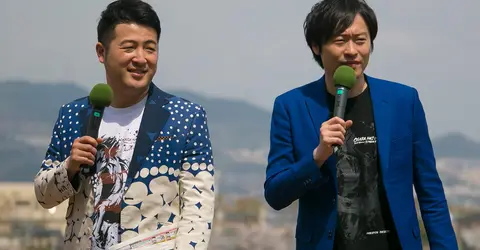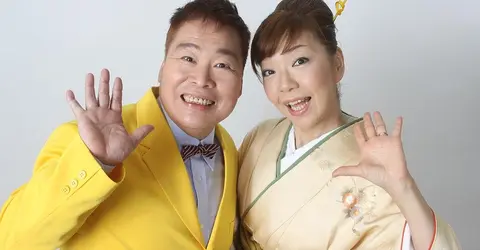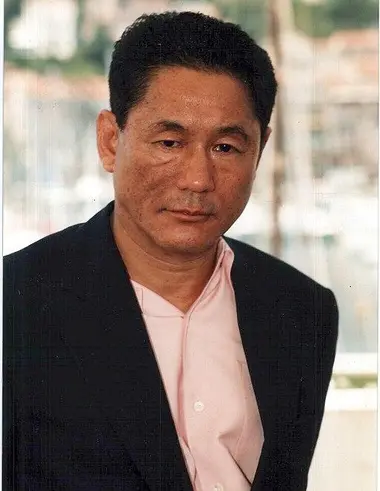Manzai, Japanese humor 漫才:日本のユーモア

manzai actors
Wikimedia
Japanese stand-up
Very popular in Japan, the manzai is an emblematic comic duo of Japanese humor. Similar to our Western stand-up , it is nevertheless more codified and the actors must train for years to master its codes.
From the religious scene to theaters
If nowadays the manzai is humorous, it was not always so. And under Heian ( 794-1185 ), this form of art was put at the service of religion .
Indeed, these duos were paid to perform at Shinto shrines on New Year's Day . One of the actors was then the voice of the divinities, calm and full of wisdom, while the other interpreted that of the spirits descended on Earth, more protesting and frivolous. The goal was thus to convey pious messages to the public .
To read: The concept of god in Japanese
This opposition between wisdom and frivolity, the manzai still preserves it today. Based on a dynamic that pits the exuberant character against his more reasonable sidekick , manzai became a comic performing art in the Edo period (1603-1868).
And although today it is Osaka manzai that dominates the humor scene , this period saw the development of many regional forms of manzai still very popular with Japanese audiences, such as the Yamato manzai near Nara, or those of Mikawa and Owari in Aichi Prefecture.
A discipline with the wind in its sails
Still very popular today, the manzai also arouses vocations ! Elevator to success, it is a real springboard for young artists wishing to break into the world of comedy one day. And many film actors have also started by becoming manzai-shi , performer of manzai , before finding glory on the big screen, like the world famous Takeshi Kitano .
This is why manzai schools and national competitions are always full on the archipelago. Among the most recognized, the M-1 Grand Prix , a competition broadcast and organized by the television channel TV Osaka, reveals new talents every year. Very serious, this competition is judged by distinguished actors of Japanese cinema, including several former manzai-shi . The winning duo will then be awarded the “ modest ” sum of 10,000,000 yen (100,000 euros), as well as a good publicity stunt.
But it is above all for the skills it brings that the art of manzai is highly appreciated by young actors. An iron discipline requiring rigor and humility, the manzai responds to precise codes which help to develop stage expression .
Codified unart
The manzai is based on a duo of actors whose roles are complementary : the boke , a colorful character making gaffe after gaffe, and the tsukkomi , a rational and wise character often having the bias of the public.
Faced with the latter, the mission of the two actors seems simple. In a given time, they have to share the same microphone by chaining the comedy words in turn . Behind the scenes, however, it requires a little more organization. The puns must arrive at the right time, the intonation must be perfect and the synchronization between the two actors must be precise .
Indeed, it is the dynamic of the duo which generally seduces the public , much more than the situation in itself which always follows the same pattern. Starting from a daily life situation , such as reading the morning paper for example, the two characters take turns giving their opinion on the theme of the conversation . It thus begins with the fabrications of the boke , always absurd and naive, which will then be questioned by the deeper (and sometimes scathing) reflections of the tsukkomi .

The manzai is not just for men. And there are also a lot of very popular co-ed groups in Japan.
Wikimedia
Made popular by the radio at the end of the Second World War , sketches of the humorous manzai pass exclusively through the comedy of words . Misunderstandings, regional accents, mispronunciations of kanji, it is a sophisticated humor that requires a good understanding of the Japanese language to be appreciated.
Where to see dumanzai?
In major cities, several performance halls regularly offer manzai performances.
Tokyo
- Asakusa Toyakan
This room is a good reminder of the religious origin of the manzai since it is located near the Senso-ji temple . It has been recognized in the industry since the 1960s and organizes performances every day.
Address :Tokyo-to,Taito-ku, Asakusa 1-43-12, Asakusa Rokku Koban Mae
Price : between 2,500 and 3,000 yen per ticket (18.80 euros - 22.60 euros), to buy on site or to reserve the venue's website .
Access : in front of exit A1 of Asakusa station (Tsukuba express line)
- Yoshimoto Mugen Dai Hall
Located in Shibuya, this performance hall is very popular with the American community in Tokyo and also regularly offers duo performances in English.
Address : Tokyo-to, Shibuya-ku, Udagawa-cho 31-2, Shibuya Beam Nai
Price: about 1000 yen (7.50 euros), to buy on site or to book on the venue's website .
Access : a few minutes on foot from the Hachiko exit of Shibuya station.
Osaka
- Yoshimoto Manzai Theater
This hall is one of the most famous in Osaka and organizes manzai performances every day.
Address : 12-7 Nanbasennichimae, Chuo, Osaka, Osaka Prefecture 542-0075
Price : between 2,000 – 2,500 yen (15 euros - 19 euros), to buy on site or to reserve on the venue's website .
Access : a few minutes from Nanba station, main entrance.









